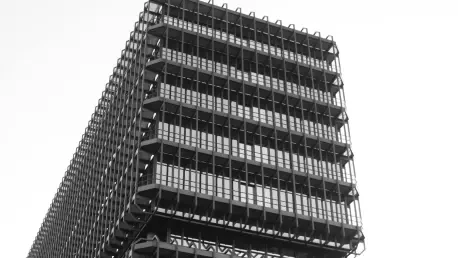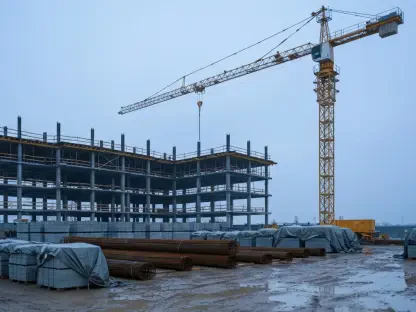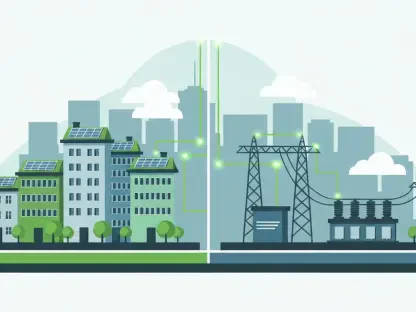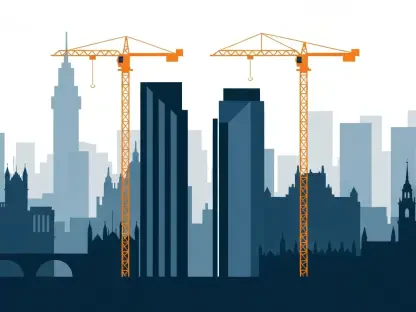Luca Calarailli, a distinguished expert in construction, design, and architecture, is spearheading innovation in urban development projects, leveraging technology to breathe new life into industrial landscapes. In this conversation, Luca sheds light on the transformative Waterside regeneration endeavor in Leicester. The interview covers the overarching goals of the project, the strategic role of Keepmoat, community engagement, and sustainable practices integral to the initiative.
Can you provide an overview of the Waterside regeneration project in Leicester and its objectives?
The Waterside regeneration project is really about transforming a neglected area into a lively neighborhood. By focusing on restoring a vast 17-acre stretch of disused industrial lands along Leicester’s waterways, the project aims to introduce 350 new homes. These aren’t just typical homes; they’re designed to be energy-efficient and located strategically by the Grand Union Canal and River Soar. The objectives extend beyond housing to include revitalized public areas and improved accessibility for everyone.
Specifically, what role is Keepmoat playing in this regeneration scheme?
Keepmoat is essentially the driving force behind this massive transformation. They are not just investing over £80 million; they’re bringing in their expertise in strategic partnerships to successfully execute this project in collaboration with Leicester City Council. Their role is crucial, as they’re responsible for delivering the new homes, enhancing public spaces, and ensuring the area’s resurgence aligns with broader community needs.
How does the investment of over £80 million contribute to the transformation of the disused industrial areas near Leicester’s waterways?
Such a significant investment allows for comprehensive redevelopment. It facilitates the construction of new homes and improvements to infrastructure, including better walking and cycling routes. Additionally, it supports enhancements that increase local biodiversity and improve the waterways’ appeal to the public. This funding transforms the area not only physically but socially and economically, paving the way for a vibrant community.
What are the primary challenges you’ve faced so far with this project, particularly related to the redevelopment of brownfield land?
Redeveloping brownfield land comes with its set of challenges, primarily related to environmental concerns and site preparation. There are always initial hurdles in addressing contamination issues that might linger in previously industrial areas. Moreover, ensuring the foundational stability for new construction is crucial. We’ve also had to navigate the complexities of integrating modern infrastructure with existing local dynamics, which requires nuanced planning and innovative solutions.
Could you explain how the partnership with Leicester City Council shaped the project’s outcomes?
Working closely with Leicester City Council has been instrumental. Their insights into the community’s real needs and aspirations have shaped the project significantly. The Council’s involvement has ensured that the regeneration aligns with Leicester’s broader urban development plans, which include enhancing the area’s economic appeal and its connectivity to the city center. It also allows us to address public concerns rapidly and effectively, ensuring the project’s success and acceptance.
What specific measures have been implemented to enhance biodiversity and improve access to the canal and river for the local community?
A crucial component of the Waterside project includes initiatives like planting native vegetation along the waterways and creating zones to support local wildlife. We’ve also enhanced public access by creating scenic paths leading up to the canal and river, encouraging walking and cycling. Such measures make these natural areas more inviting and accessible, fostering community engagement with the environment.
Flood protection is mentioned as a part of the project. Can you elaborate on what these flood protection measures entail?
Flood protection is vital, especially in areas adjacent to waterways. We’ve adopted several measures, such as elevating structures prone to flooding and installing advanced drainage systems to manage excess water. This ensures resilience against potential flooding events, safeguarding both the new homes and broader community infrastructure.
How does Keepmoat plan to ensure the new homes are energy-efficient and sustainable?
Sustainability is at the core of our construction practices. The new homes are built with high-quality materials that offer superior insulation and efficient energy systems like solar panels and heat pumps. Incorporating smart home technology is another way we’re ensuring that these homes consume less energy. It’s all about creating spaces that are not only eco-friendly but also economically responsible for residents.
What aspects of the project are aimed at benefiting the local community and employment hubs?
The regeneration isn’t just about buildings; it’s also about reinvigorating the local economy. Creating attractive residential areas close to employment hubs is central to this. We’ve improved transport links to help residents commute easily to workplaces within and outside the city. Additionally, communal spaces and amenities are being designed to promote social interaction and support small businesses, ultimately boosting local commerce.
As the project approaches its final phases, what are the main goals for the development of the Frog Island neighborhood?
Frog Island’s development focuses on integrating residential and community spaces seamlessly. The goal is to create a neighborhood that serves as a hub for cultural and social activities, benefitting both new residents and the wider community. We aim to balance livability with commercial prospects, ensuring the area retains its historical character while embracing modernity.
How does the Waterside regeneration align with Keepmoat’s broader strategy to develop on brownfield sites?
Keepmoat has a proud tradition of turning overlooked brownfield sites into thriving communities. The Waterside project is a prime example of this approach, emphasizing transforming industrial areas into sustainable residential neighborhoods. It’s consistent with our broader strategy of utilizing existing landscapes to curtail urban sprawl and promote efficient land use.
Could you share insights into any innovative design or construction techniques being used in the Waterside project?
We’ve incorporated several groundbreaking techniques in Waterside, such as modular construction processes that speed up building times and improve quality control. Eco-friendly materials that offer better durability and insulation are heavily utilized. Additionally, digital planning tools have enabled more accurate designs and efficient use of resources, ensuring harmony with the surrounding environment.
What feedback have you received from the local community regarding the transformation of this area?
The response has been overwhelmingly positive. Residents appreciate the revitalization efforts, particularly regarding improved accessibility and housing quality. There’s a strong sense of anticipation for the finalized neighborhoods, reflecting increased local pride and optimism about future prospects. Community feedback has also been instrumental in guiding adjustments during the development phases, highlighting the importance of maintaining open channels of communication.
How do you envision the neighborhood once the project is completed at the end of 2026?
By 2026, we envision Waterside as a vibrant community hub where urban living harmonizes with nature. It should be a place that not only provides comfortable living spaces but also fosters social bonds and economic opportunities. Residents will enjoy easy access to the waterways, recreational areas, and employment hubs, making it both an attractive and practical place to settle.
Can you highlight any other regeneration projects by Keepmoat that are similar to Waterside in scope and ambition?
Certainly, Keepmoat has undertaken several ambitious projects across the UK, like the regeneration of inner-city areas that mirror the transformative efforts seen at Waterside. These projects often focus on large-scale brownfield redevelopment, aiming to create eco-conscious communities that blend residential spaces with commercial viability. Each initiative is designed to reinvigorate neglected areas and offer accessible, sustainable living environments.









